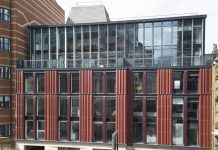Adam Varley, Head of Office Agency at national commercial property consultancy Lambert Smith Hampton (LSH), explores the property fundamentals behind Leeds’ burgeoning technology, media and telecommunications (TMT) sector.
Last month the Centre for Economics and Business Research published a report forecasting that the future of the UK’s digital economy lies with the Northern Powerhouse, highlighting that by 2020 one job in every eleven in the North of England will be in the creative and TMT sectors. Furthermore, the report predicts that by 2020 the total number of digital jobs in the North of England will outnumber that of London by more than 60%.
Employment figures recently released by the government suggest that this isn’t simply wishful thinking – particularly across Yorkshire and Humber. The region saw employment in the TMT sectors rise 18% from 2014 to 2015 – the highest growth across the whole of the UK, including London, over this period. Moreover, from 2011 to 2015, employment in the TMT sector across Yorkshire and the Humber grew by 30%.
This rapid growth has led to a marked rise in employment in the sector across region, resulting in significant occupier demand from TMT businesses. Leeds, for example, is already home to 8,500 TMT companies employing over 70,000 staff and contributing £3 billion GVA to the regional economy. Three of those firms, SkyBet, Emis Group and Callcredit, were recently quoted as having a worth in excess of $500m in a survey by technology investment bank, GP Bullhound.
As a result, the city’s TMT occupier market is booming. Findings from LSH’s Northern Powerhouse Office Market Report highlighted that, across the whole of the city last year, take-up from TMT companies represented 28% of all occupier deals in the city – the highest take-up of any sector.
All the fundamentals are in place for this demand for space to continue. Leeds is the only city in the UK that has declared internet independence from London, while the city region has direct access to one of Europe’s most significant higher education clusters with an annual pipeline of 41,500 graduates, 20% of whom are in Science, Technology, Engineering and Mathematics.
The continuing challenge for the real estate market across Leeds and the wider Yorkshire and Humber region is to keep pace with this demand. Last week Leeds City Council tabled the idea of the creation of an innovation district within the city incorporating the University of Leeds, Leeds Beckett University and the General Infirmary within the Arena Quarter of the city. The idea would be to bring together some of the city’s most creative and innovation institutions and continue to build on the success of the Leeds Innovation Centre, as well as the potential that the development of the £40m, 10,000 sq m University Innovation and Enterprise Centre (UIEC) will bring.
But LSH’s Q2 2016 Leeds Office Market Pulse highlights that grade A office space accounts for only 22% of the total available stock across Leeds and, while 540,000 sq ft of new build space is set to complete in 2016, it tends to be the wrong type of space, in more established ‘traditional’ business locations. Investors and developers therefore need to adapt to the growing requirements of TMT businesses before they are lost to other major UK cities such as Birmingham, Manchester and Edinburgh.
To do this, it is important to understand businesses in this sector. For them, the building which they occupy can’t merely be an envelope, it’s what happens inside that makes a difference.
Occupiers in the TMT sector typically look for more flexible office accommodation capable of supporting creative activity, clustered around other like-minded businesses allowing for greater collaboration and sharing of ideas to undercover opportunities, which is reflected in the location, size and type of space leased. Fewer workstations give way to more informal work places. The boundaries between client space and work space are much less defined than in more traditional, corporate office environments with large floor plates of circa 20,000 sq ft. Grand reception desks that create a barrier between a business and its visitors are superseded by lounge areas that provide a more welcoming experience.
Landlords that have designed buildings to accommodate this growing sector of the market have seen the best results. A recent success storey is Allied London’s Leeds Dock, a part of the city which has been through a significant transition, having struggled to establish its identity previously. Following Allied London’s acquisition, the scheme is being reinvigorated and has already attracted global brands Sky & Google’s Digital Garage. The South Bank offers a unique proposition for Leeds in its commitment to be the best city in the UK by 2030. The creation of the Yorkshire Hub through major infrastructure projects like HS2 and HS3 (or Northern Powerhouse Rail) will play an important part, both in connecting the city to a larger more mobile workforce, but also in acting as a catalyst and focus for further development.
Leeds’ vibrant cultural scene, abundance of retail and leisure, and cost-effective housing is unrivalled in the North. Companies looking to attract bright, young talent will continue to locate here as long as they have the right space. We, as a city region, need to continue to make sure that happens.






















